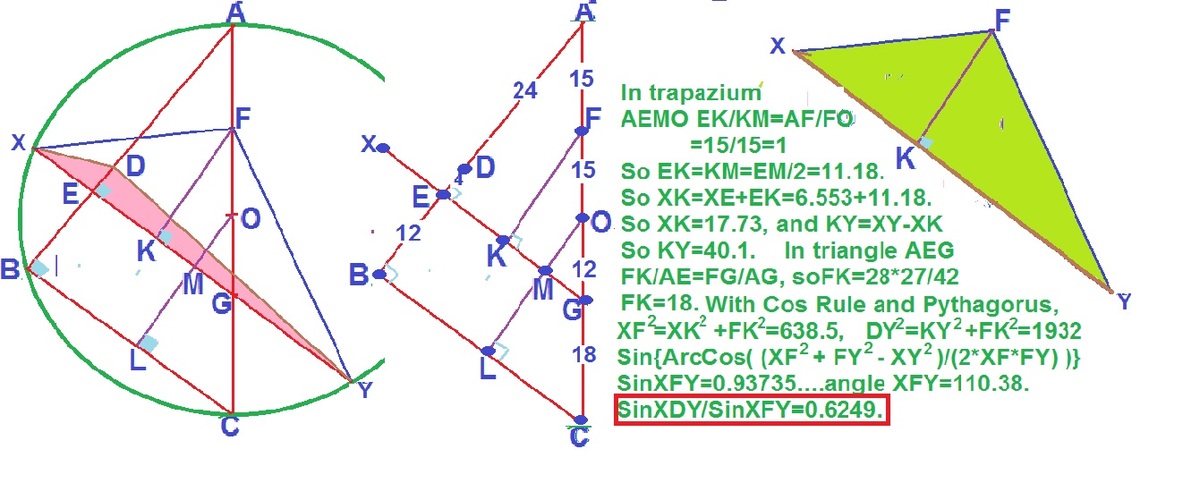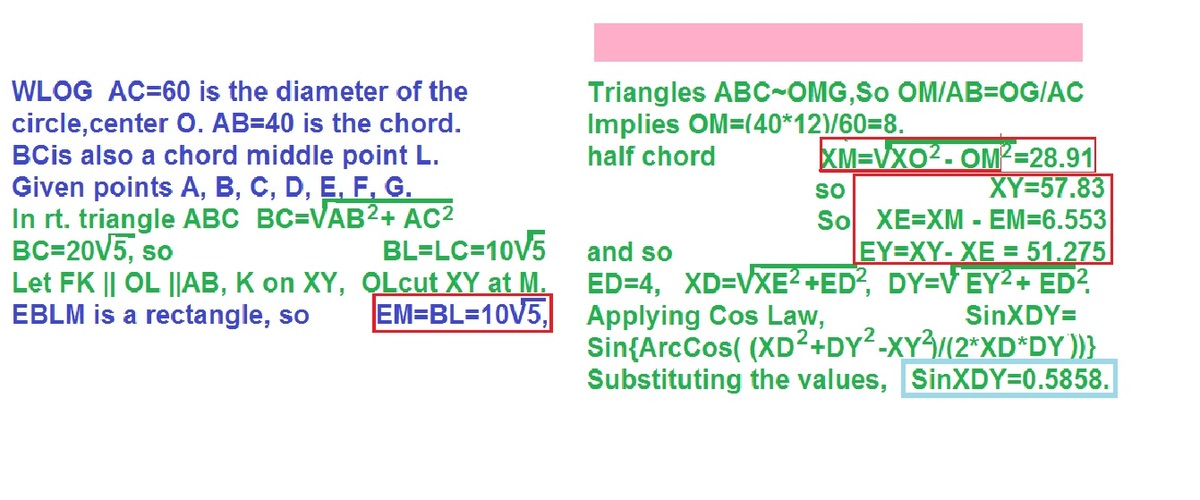Many Points, Many Segments
are points on circle . Suppose points are on and points are on such that If interesect at , find
The answer is 0.625.
This section requires Javascript.
You are seeing this because something didn't load right. We suggest you, (a) try
refreshing the page, (b) enabling javascript if it is disabled on your browser and,
finally, (c)
loading the
non-javascript version of this page
. We're sorry about the hassle.


This problem has many geometrically significant points in disguise, I will expose them now: D , F are isogonal conjugates wrt △ A X Y . This will follow from an important property about isogonal conjugates below:
Property1: Suppose P , Q are isogonal conjugates wrt △ A B C . Let A P meet B C , ( A B C ) at A P , P A respectively; define A Q , Q A similarly. For simplicity reasons assume P , Q lie inside the triangle. Prove that A P P A P A P = Q Q A A Q and (symmetrically) A Q Q A Q A Q = P P A A P
Proof: Angle chasing gives: ∠ P B P A = ∠ P B A P + ∠ P A B A P = ∠ A B Q + ∠ B A Q A = ∠ B Q Q A . Since ∠ A Q A B = ∠ A P A B , therefore Q B Q A ∼ B P P A .
Define T on B Q A such that Q T ∣ ∣ A B , then ∠ B Q T = ∠ A B Q = ∠ P B Q ⟹ Q B Q A ∪ T ∼ B P P A ∪ A P ⟹ A P P A P A P = Q A T B T = Q Q A A Q . The second ratio equality follows analogously. □
Now we show that D , F are isogonal conjugates wrt △ A X Y . We will designate X , E , G , Y to be collinear in that order:
Notice that C G B E = 3 2 = A C A B , therefore E G ∣ ∣ B C ∣ ∣ X Y . It follows that cyclic X Y C B must be an isosceles trapezoid and thus X B = C Y ⟹ ∠ X A B = ∠ C A Y or that A B , A C are isogonal wrt ∠ X A Y .
Let F ′ denote the isogonal conjugate of D wrt A X Y , then F ′ lies on A C . By Property 1, F ′ satisfies: C F ′ A F ′ = B E D E = 3 1 This, of course, fits the description of F as C F A F = 4 5 1 5 , therefore F = F ′ and we have proven our claim.
To find sin ∠ X F Y sin ∠ X D Y , we have to use another property of isogonal conjugates:
Property2: In the same set up as property 1, prove that sin ∠ B Q C sin ∠ B P C = A P A Q .
I will omit the proof for this as it is just a straightforward application of the triangle Sine law; there exists a more elegant solution that involves similarity.
Applying this property to our problem, the answer is sin ∠ X F Y sin ∠ X D Y = A D A F = 8 5 = 0 . 6 2 5